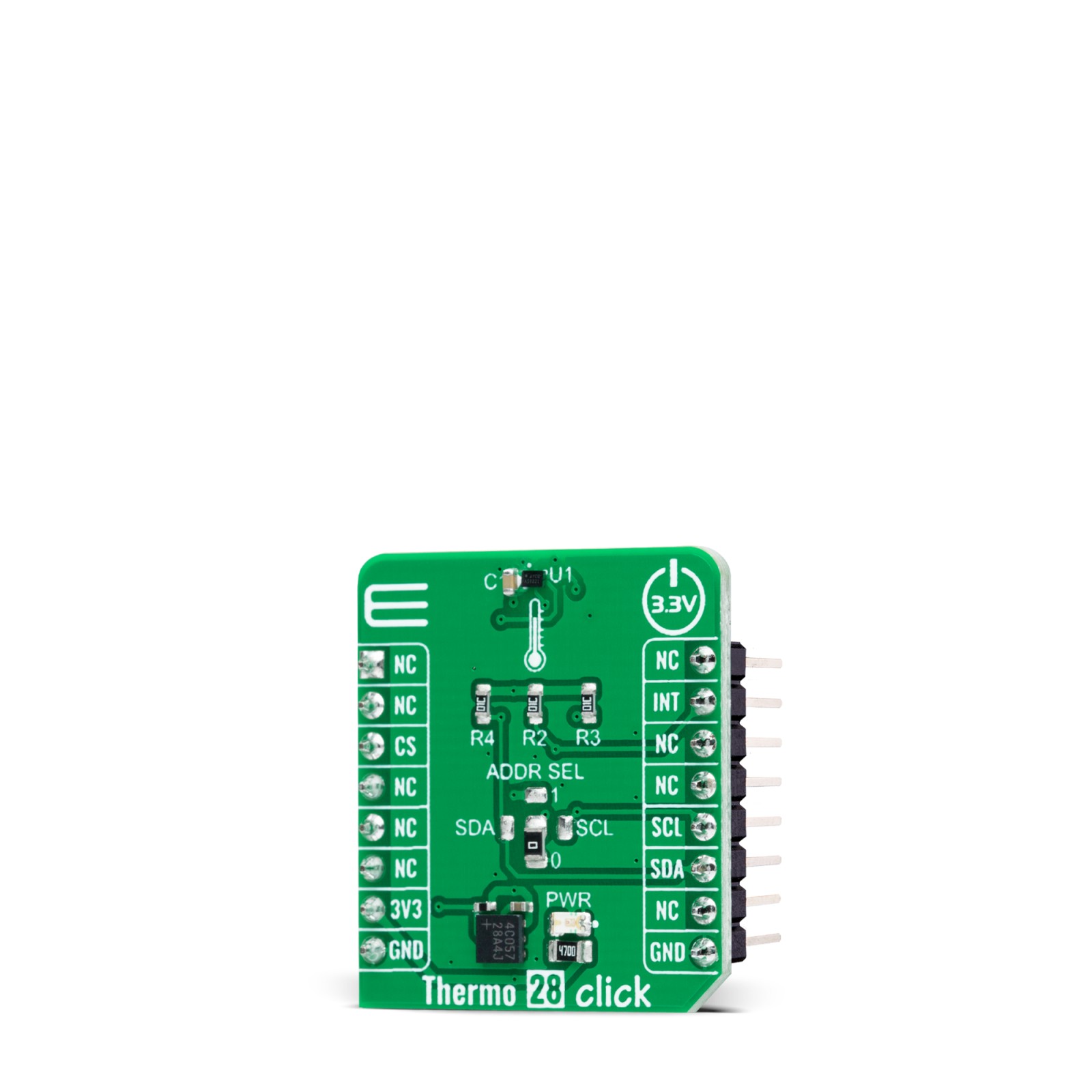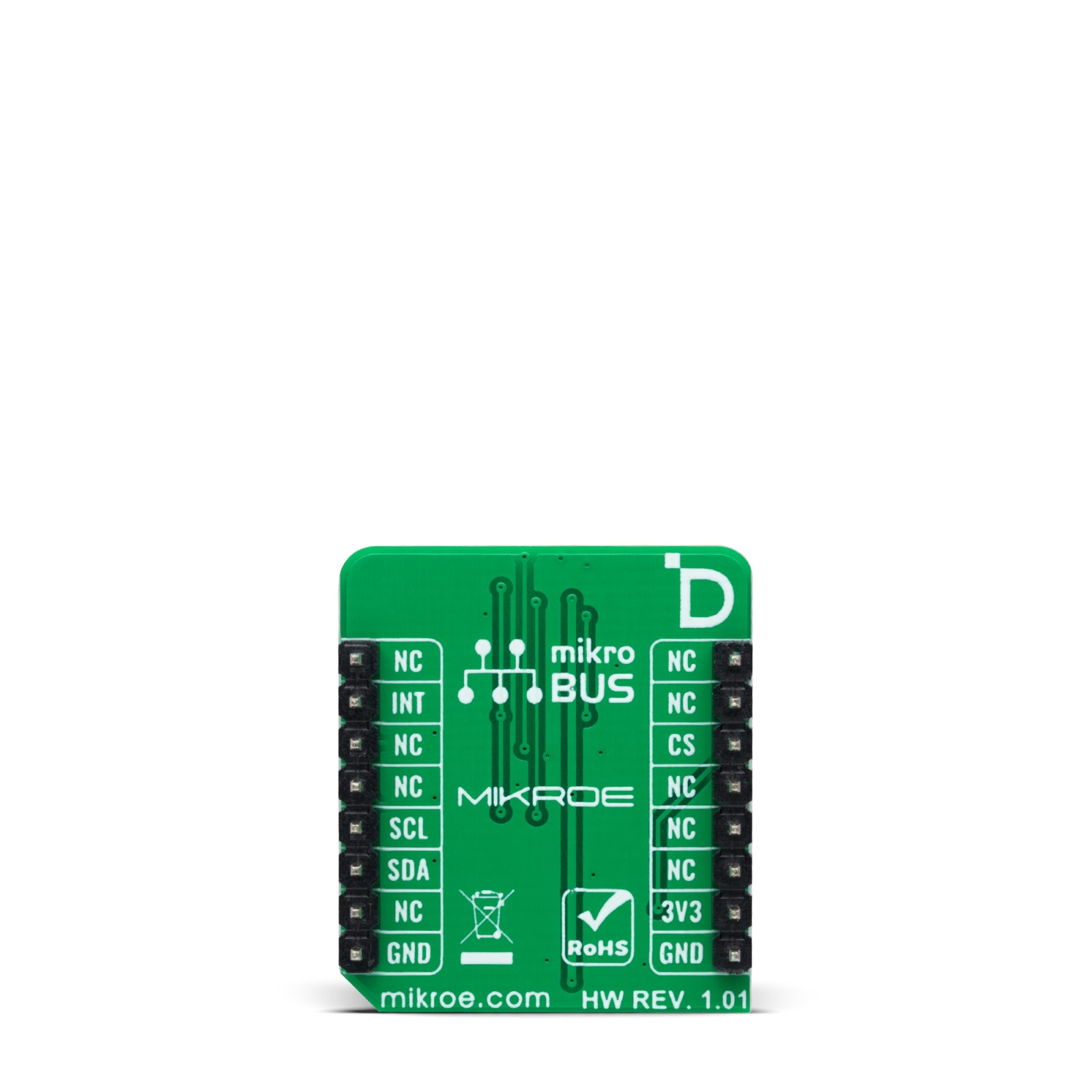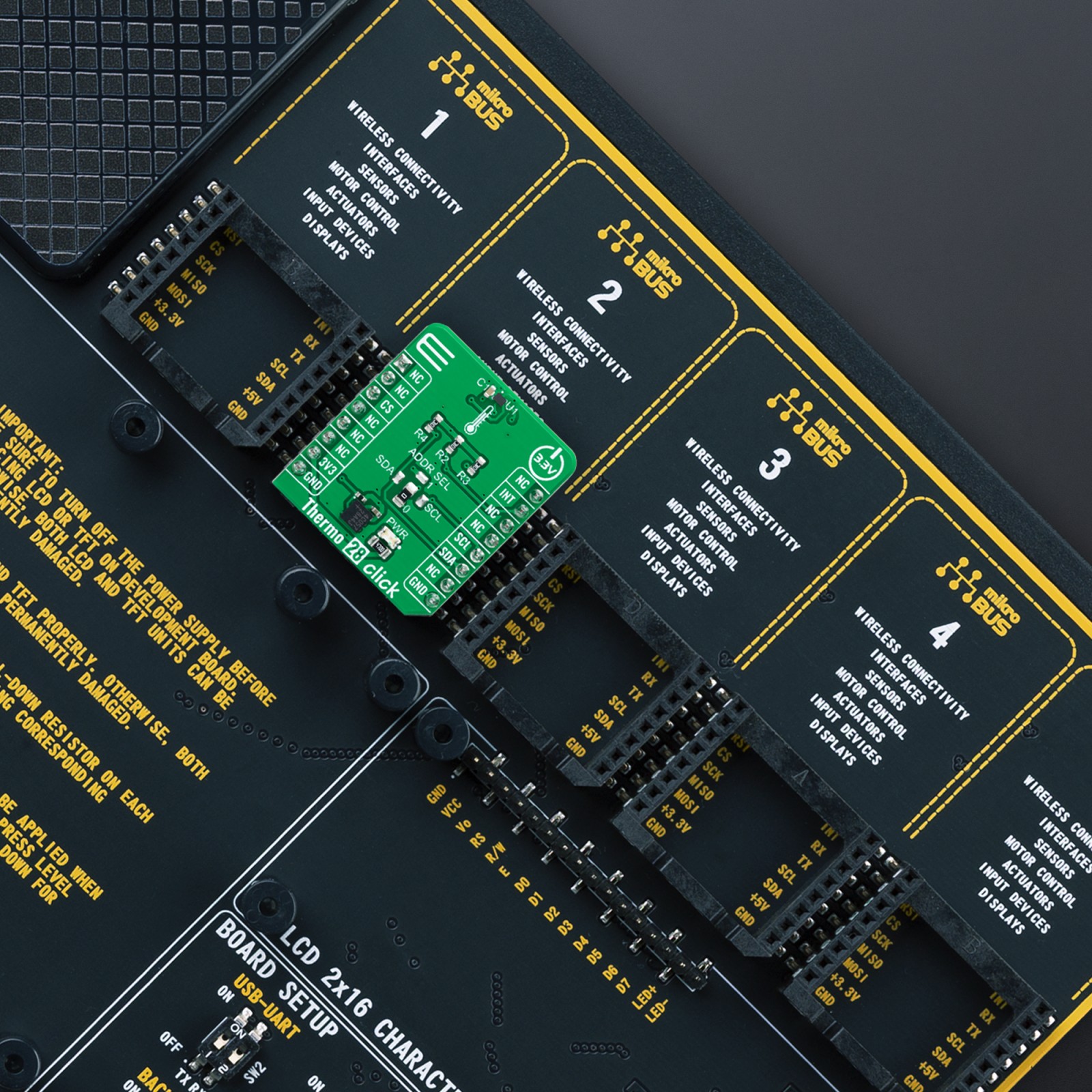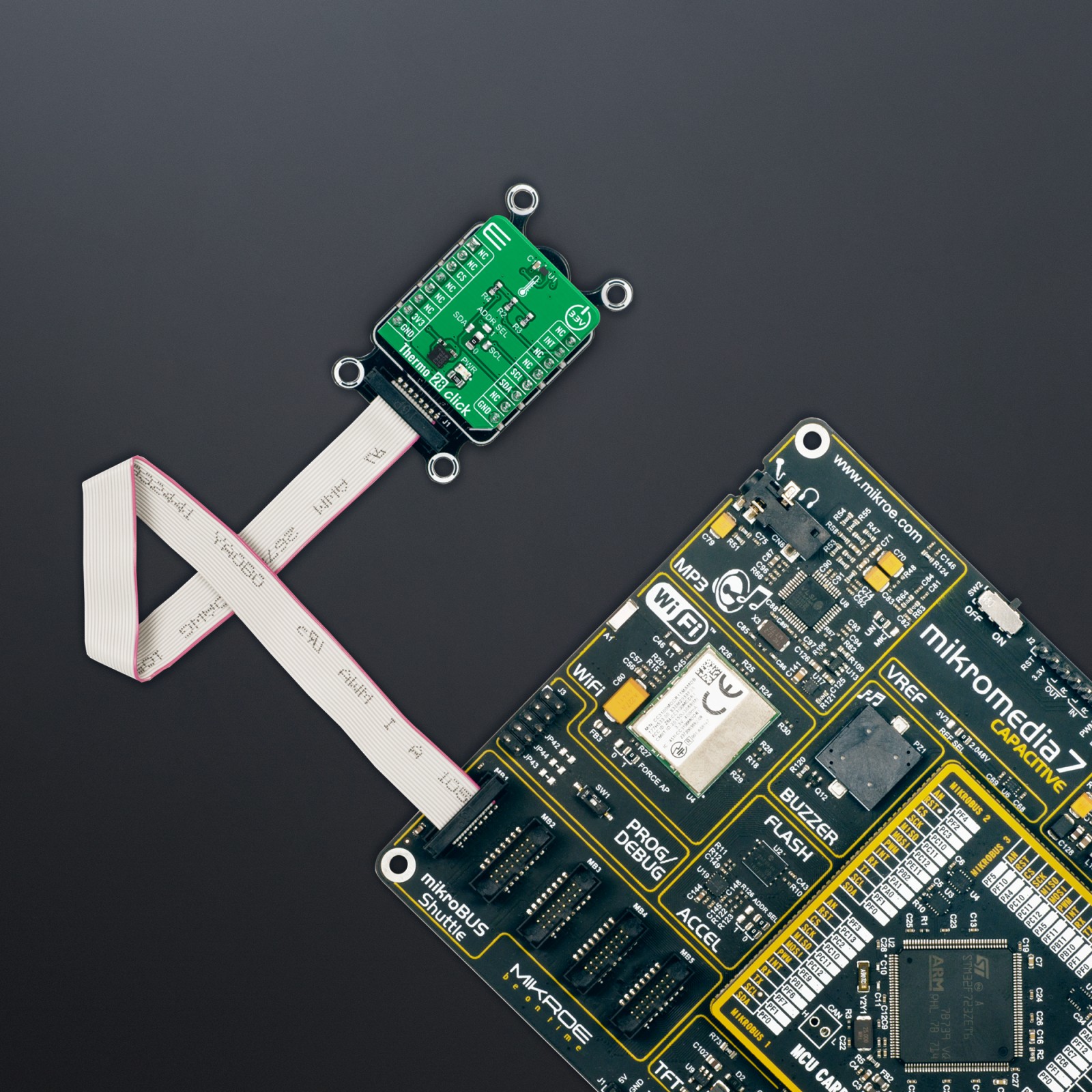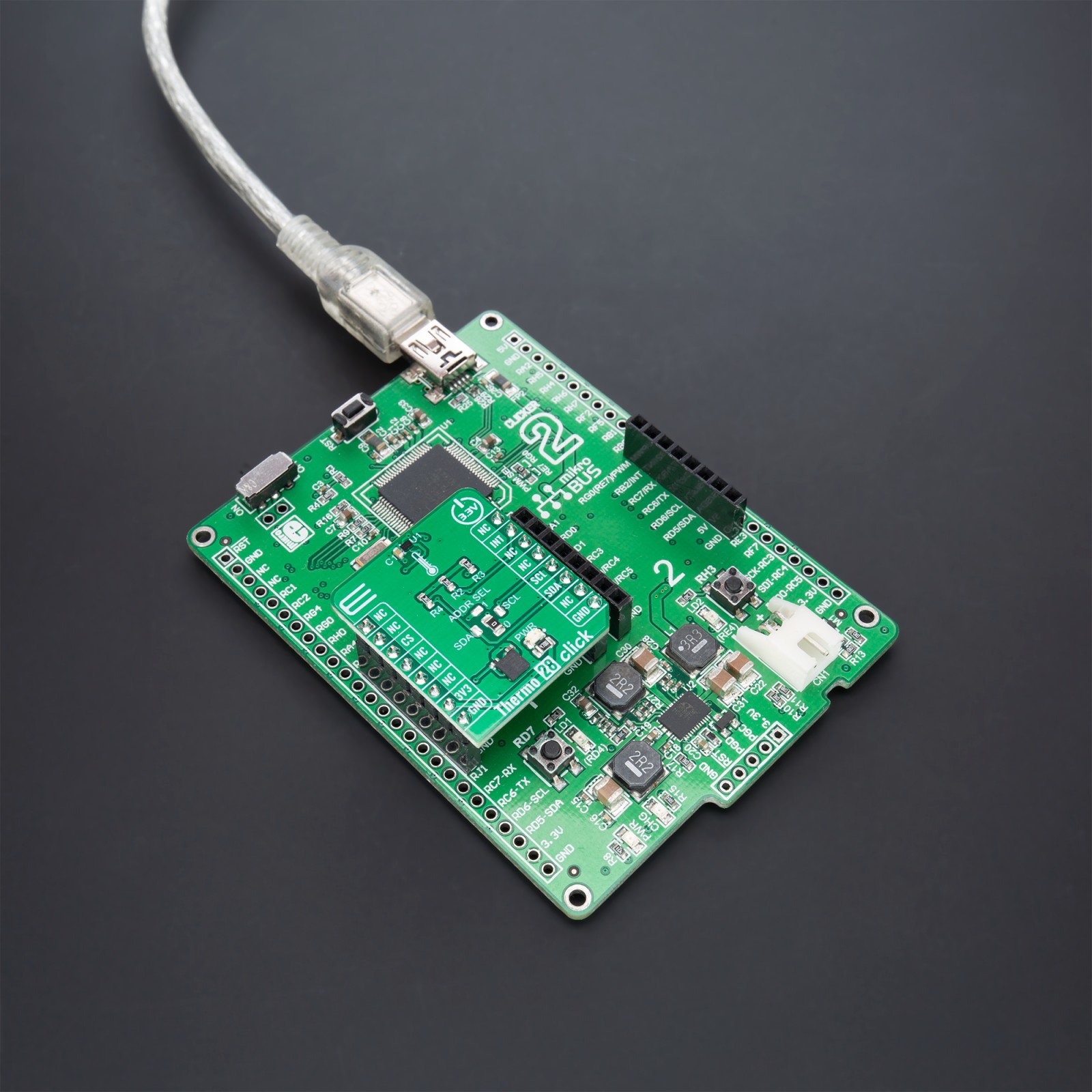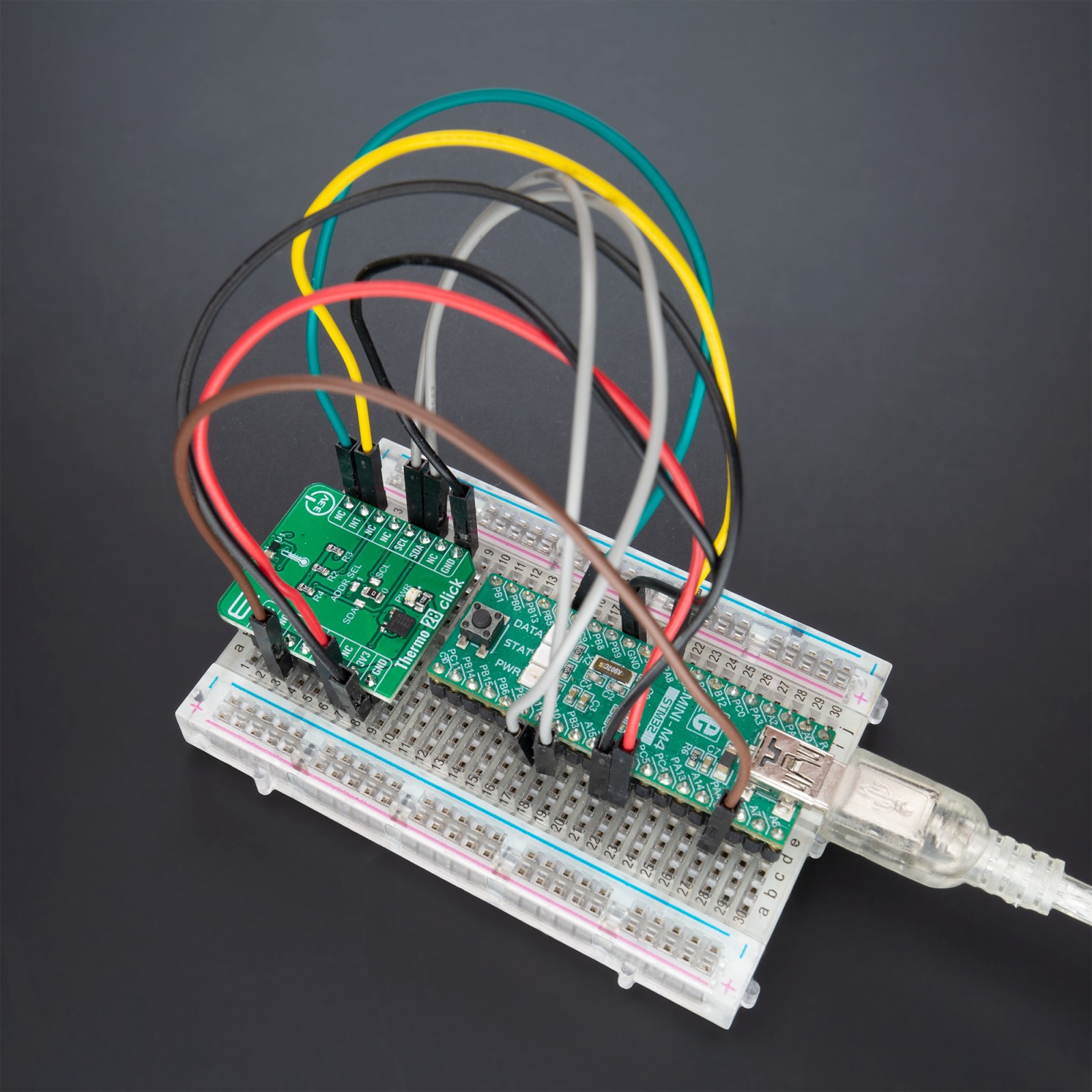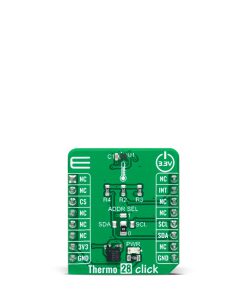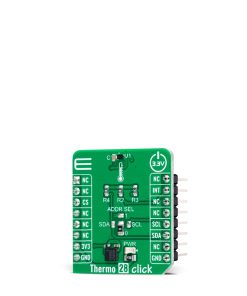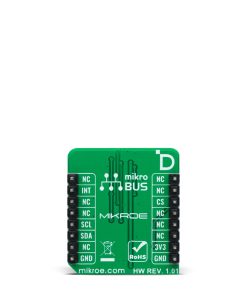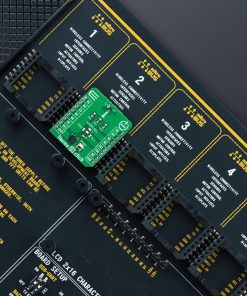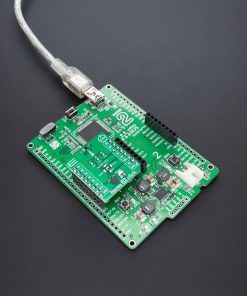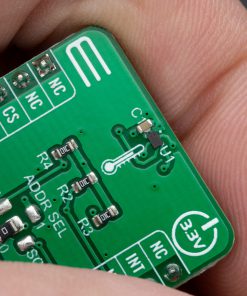Thermo 28 Click
R240.00 ex. VAT
Thermo 28 Click is a compact add-on board that accurately measures temperature. This board features the ams AG’s AS6221, a high-accuracy digital temperature sensor. The AS6221 consists of a Si bandgap temperature factory-calibrated sensor, 16-bit ADC, and a digital signal processor, offering a high accuracy of ±0.09°C. It provides temperature data to the host controller through a compatible I2C interface, reliability, user-selectable I2C addresses, and alert functionality, which triggers an interrupt to protect the device from excessive temperatures. This Click board™ can be used in applications with high measurement accuracy, such as measuring the skin temperature and replacing PTC resistors in various consumer and environmental applications.
Thermo 28 Click is fully compatible with the mikroBUS™ socket and can be used on any host system supporting the mikroBUS™ standard. It comes with the mikroSDK open-source libraries, offering unparalleled flexibility for evaluation and customization. What sets this Click board™ apart is the groundbreaking ClickID feature, enabling your host system to seamlessly and automatically detect and identify this add-on board.
Stock: Lead-time applicable.
| 5+ | R228.00 |
| 10+ | R216.00 |
| 15+ | R204.00 |
| 20+ | R196.32 |


